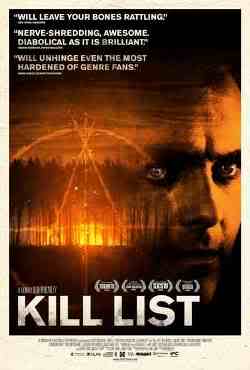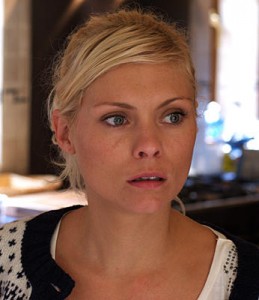 Kill List/2011/IFC Midnight/95 min.
Kill List/2011/IFC Midnight/95 min.
“Kill List” is a resonant film that demands your attention with its oblique weirdness and darkly alluring characters, but in the end doesn’t live up to its full storytelling potential.
An ambitious mix of genres, the film is divided into three parts – it begins with fly-on-the-wall family drama, segues into a black-humor thriller about two matter-of-factly brutal hitmen and culminates in full-on horror centering on a furtive, frightening cult. But while the first two thirds of the movie are richly atmospheric and unusually compelling (there’s an intense realism to the acting), the final chapter feels disappointingly banal.
“Kill List” has real spontaneity in the performances though, perhaps because director Ben Wheatley co-wrote the script with Amy Jump specifically for the actors, then encouraged them to improvise. That, said Wheatley at a round-table interview Friday in West Hollywood, gave the film sweeter, funnier moments than he had in the script.
Neil Maskell plays Jay, an English hitman figuring out his next step, several months after a job went wrong in Kiev. An average Joe with a pudgy face and love handles, Jay might just as easily be a used-car salesman or an insurance agent who has hit a dry patch and needs to pull in some cash.
Tension simmers between Jay and his wife Shel (MyAnna Buring, an icy Hitchcockian blonde). Their young son Sam (Harry Simpson) winces when his parents fight, which is frequently.
Jay’s work prospects look brighter after a visit from his friend, goofy-looking Gal (Michael Smiley) and his smoldering girlfriend Fiona (Emma Fryer). Jay and Gal, despite their apparent inefficiency in Kiev, are entrusted with a new assignment. The victims accumulate, Jay’s grasp on reality is increasingly tenuous and the hitmen are drawn into the workings of the cult.
Wheatley, who also directed the 2009 crime comedy “Down Terrace,” has a penchant for ’70s films. In “Kill List,” he said, he had elements of these films on his radar: “Race with the Devil,” “The Wicker Man,” “The Parallax View,” and “The Manchurian Candidate” as well as the work of directors John Cassavetes (“Faces”) and Alan Clarke (“Scum”).
As for the genre-bending in “Kill List,” Wheatley said he front-loaded the film with characterizations so the last part would work. “Knowing who these people are amplifies the violence and you’re primed for the crazy horror.”
All well and good. Except that, despite laying the groundwork, the horror seemed more half-baked than truly disturbing. But that’s just me. Pointing out that much of the film’s violence is implicit – imagined and defined by viewers – Wheatley said, “You look at the film and the film looks at you. Your own prejudices come out. [The film] puts a weird curse on the audience.”











From FNB readers